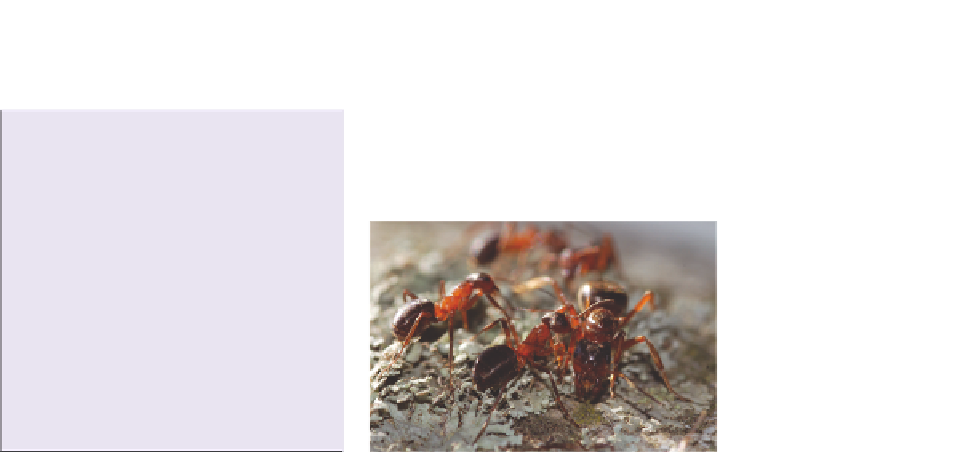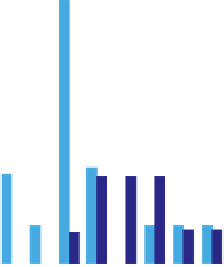Biology Reference
In-Depth Information
0.5
female-producing
male-producing
0.4
0.3
0.2
0.1
0
0
1
2
3
4
5
6
7
8
9
10+
effective queen number
Fig. 10.3
The distribution of number of queens in a colony for colonies that produce
either female (light blue) or male (dark blue) reproductives, in the narrow-headed ant
Formica exsecta
. Colonies with relatively few queens produced females, whereas colonies
with many queens produced males. From Brown and Keller (2000). Photo by Rolf Kümmerli.
of resources, such as honeydew-bearing aphids on conifer trees. Furthermore, they then
went on to test these ideas experimentally, showing that both the removal of queens and
increasing food resources (by placing tuna and honey at the nest) led to colonies producing
a higher proportion of female reproductives (Kümmerli
et al
., 2005; Brown & Keller, 2006).
If the extent of
competition
between related
females varies,
then females will
be produced in
the environments
where
competition is
lowest
Local mate competition
Bill Hamilton (1967) noticed that a number of insect and mite species which had extremely
female-biased sex ratios, also tended to have a life history where brothers compete with
each other for mates, many of whom are their sisters. He explained this as a special case of
LRC that is termed 'local mate competition' (LMC). The exact reason why LMC should
favour a female-biased sex ratio was the subject of much controversy during the 1970s and
1980s, but it is now accepted that it occurs for two reasons (Taylor, 1981). Firstly, suppose,
for example, that two sons have only one chance to mate and that they compete for the
same female. Only one of them can be successful in mating, so from their mother's point of
view one of them is 'wasted'. This is an extreme example, but it illustrates the general point
that when sons compete for mates their value to their mother is reduced. The mother
should, therefore, bias her ratio of investment towards daughters. Secondly, if sons are able
to mate with their sisters (inbreeding), then a female-biased sex ratio has the additional
bonus of providing more mates (daughters) for sons, and so the higher proportion of
daughters a mother produces the greater value of each son produced.
The exact degree of bias predicted by Hamilton's theory depends on the degree of
local mate competition. Consider the extreme case of complete inbreeding, where a
mother 'knows' that all her daughters will be fertilized by her sons. The best sex ratio in
this instance is to produce just enough sons to fertilize the daughters, since any other
If brothers
compete for
mates, the sex
ratio should be
female biased
















































